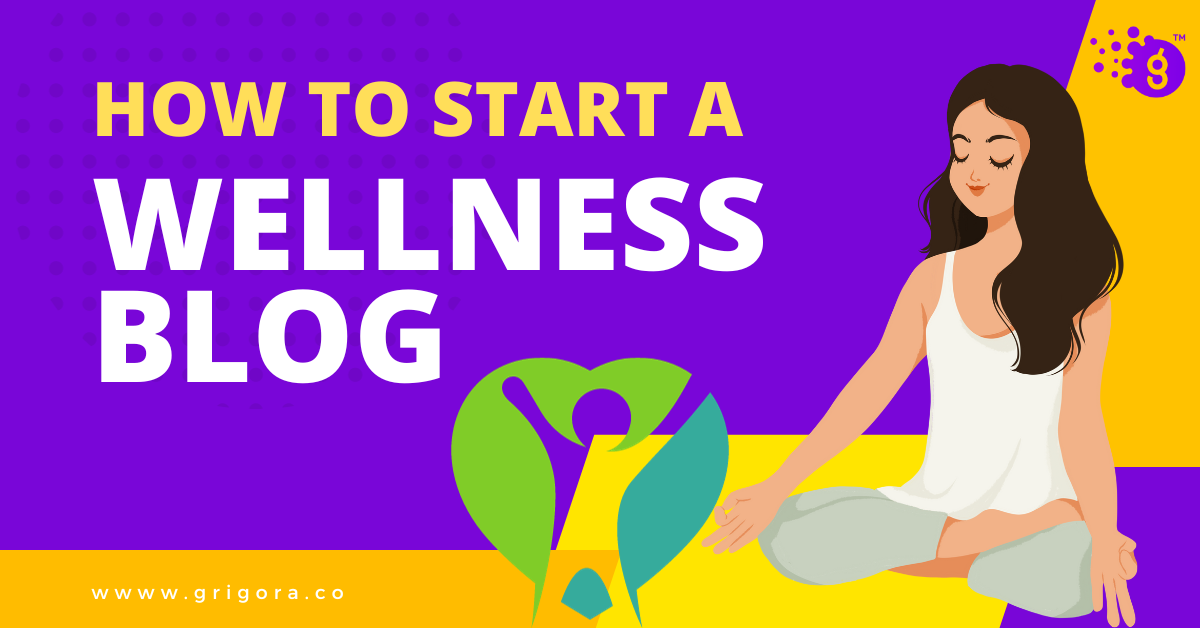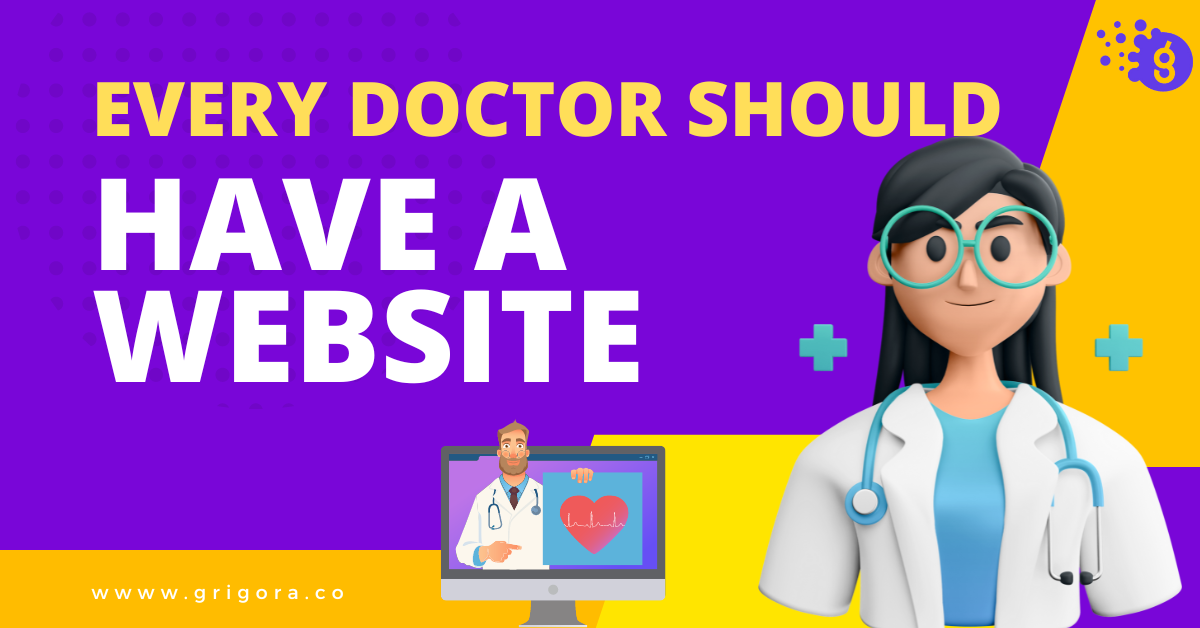Introduction: Embracing the Wellness Blogging Trend
Wellness is not just a state of body, but a state of being; it's a journey that starts within and radiates outward.
This quote beautifully captures the essence of wellness blogging—a platform where personal health journeys inspire and guide others. The trend of wellness and self-care blogs has seen a significant rise in recent years, becoming a go-to source for many seeking guidance on leading a healthier, more balanced life.
Grigora emerges as a versatile platform for wellness bloggers, offering an array of customization options and community engagement tools. It's not just about creating a blog; it's about crafting a wellness sanctuary online. With Grigora, bloggers can design their space to reflect the tranquility and healing they wish to share with their audience. The platform's flexibility allows for a wide range of wellness topics, from mental health discussions to fitness routines, nutrition advice, and holistic health insights.
In the following sections, we'll explore how to define your wellness niche, establish a unique philosophy, and effectively use Grigora's features to create a successful wellness blog that resonates with and supports your audience.
Defining Your Wellness Niche with Grigora
Choosing a specific wellness focus is crucial in setting your blog apart in the vast world of wellness blogging. A well-defined niche not only helps in attracting a targeted audience but also establishes your expertise in a particular area of wellness. Whether your passion lies in mental health, fitness, nutrition, holistic health, or any other wellness aspect, defining this niche is your first step towards creating a meaningful blog.
Grigora's flexible platform supports various wellness niches, allowing bloggers to tailor their content effectively. This adaptability ensures that whether you're offering yoga tutorials, sharing nutritional recipes, or discussing mental health strategies, your blog can be customized to suit your specific theme and audience.
Crafting a Unique Wellness Philosophy
Your wellness philosophy is the backbone of your blog. It's what defines your approach and sets the tone for your content. This philosophy should be a blend of your personal insights and evidence-based wellness information. It's about creating a balance that resonates with your audience while providing them with reliable and helpful content.
Balancing Personal Insights with Evidence-Based Information
While personal stories and experiences can make your blog relatable and engaging, it's essential to balance these with evidence-based information. This approach not only builds credibility but also ensures that your readers are receiving accurate and helpful wellness advice.
Choosing the Right Blogging Platform
When it comes to wellness blogging, selecting the right platform is a decision that can significantly impact your blog's success. The ideal platform should offer a blend of aesthetic flexibility, ease of use, and robust community engagement tools. These features are crucial for wellness bloggers who often rely on visually appealing content and strong reader interaction to build their audience.
Evaluating Platform Features for Wellness Blogging
Aesthetic flexibility is key in wellness blogging. Your platform should allow you to create a serene and inviting space that reflects the essence of your wellness niche. Look for platforms that offer a range of customizable templates and design options.
Ease of use is another critical factor. As a wellness blogger, you want to spend more time creating content and engaging with your audience, and less time grappling with technical issues. A user-friendly interface is essential, especially if you're new to blogging.
Community engagement tools are vital for building a loyal readership. Features like commenting systems, social media integration, and email subscription options can help foster a sense of community around your blog.
Factors to Consider for Wellness Bloggers
Aesthetic Flexibility: Your blog should visually represent the tranquility and positivity of wellness. Choose a platform that offers customizable designs and themes that align with your wellness niche.
User-Friendly Interface: A platform that is easy to navigate and manage allows you to focus more on content creation and less on technicalities.
Social Media Integration: In the digital age, social media is a powerful tool for promoting your wellness content. A platform with strong social media integration capabilities can significantly boost your blog's reach.
Designing Your Wellness Blog
Designing your wellness blog involves more than just selecting a theme; it's about creating an online space that embodies the essence of wellness and tranquility. A well-designed blog not only attracts visitors but also makes them feel comfortable, encouraging them to explore more of your content.
Creating a Visually Appealing and Calming Blog Design
Soothing Color Palette: Choose colors that evoke calmness and relaxation. Soft pastels, earthy tones, or even a monochromatic scheme can set the right mood for your wellness blog.
Clean and Uncluttered Layout: A cluttered website can be overwhelming. Opt for a clean, minimalistic design that focuses on content and easy navigation.
High-Quality Images: Use high-resolution images that reflect the wellness lifestyle. Whether it's serene landscapes, healthy foods, or yoga poses, visuals play a crucial role in conveying your blog's message.
Emphasizing Mobile Responsiveness and User-Friendly Navigation
Mobile Responsiveness: With the increasing use of smartphones, ensure your blog is mobile-friendly. A responsive design adapts to different screen sizes, providing a seamless experience for mobile users.
User-Friendly Navigation: Make it easy for visitors to find what they're looking for. A well-organized menu, clear categories, and a search bar are essential elements of user-friendly navigation.
Incorporating Interactive Elements
Engagement Features: Consider adding features like comment sections, polls, or quizzes to encourage reader interaction.
Subscription Options: Make it easy for visitors to subscribe to your blog. This could be through email newsletters or RSS feeds, keeping them updated on new content.
Content Creation Strategies
Creating content for your wellness blog is not just about sharing information; it's about connecting with your audience through stories, experiences, and valuable advice. A well-thought-out content strategy can make your blog a go-to resource for wellness enthusiasts.
Sharing Engaging, Authentic Wellness Stories and Advice
Personal Experiences: Share your wellness journey or personal experiences with health and self-care. Authentic stories can inspire and motivate your readers.
Expert Interviews: Feature interviews with wellness experts or guest posts from professionals. This adds credibility and variety to your content.
Interactive Content: Create quizzes, surveys, or interactive guides that engage readers and provide personalized insights into their wellness journey.
Balancing Personal Narratives with Actionable Wellness Tips
Practical Advice: Alongside personal stories, offer practical, actionable advice. This could be wellness tips, healthy recipes, or exercise routines.
Evidence-Based Information: Ensure that the wellness advice you provide is backed by research. Cite sources and studies to build trust with your audience.
Diverse Content Formats: Use a mix of content formats like blog posts, videos, infographics, and podcasts to cater to different preferences and enhance engagement.
Regularly Updating and Refreshing Content
Consistent Posting Schedule: Maintain a regular posting schedule to keep your audience engaged and coming back for more.
Seasonal Topics: Align some of your content with seasons or holidays. For example, focus on mental health during the winter months or healthy eating during the holidays.
Building Credibility in the Wellness Community

Establishing yourself as a credible and trusted voice in the wellness community is essential. It involves not just sharing knowledge but also demonstrating a commitment to accuracy and ethical practices in your blogging.
Establishing a Trusted Voice in the Wellness Community
Consistent Quality: Ensure that each blog post maintains a high standard of quality and accuracy. This builds trust over time.
Show Expertise: Share your qualifications, experiences, or any certifications related to wellness to establish your expertise.
Stay Updated: Keep abreast of the latest wellness trends and research. This shows your commitment to providing current and relevant information.
Collaborating with Professionals and Citing Credible Sources
Guest Posts: Invite wellness experts to contribute guest posts. This not only adds credibility but also brings diverse perspectives to your blog.
Citing Sources: Whenever you reference health data or research, cite your sources. This practice adds legitimacy to your content.
Professional Collaborations: Collaborate with healthcare professionals or wellness coaches for webinars, interviews, or joint articles.
Showcasing Testimonials and Success Stories
Reader Testimonials: Share testimonials from readers who have benefited from your advice. This can be a powerful tool in building credibility.
Success Stories: If you offer wellness programs or challenges, showcase the success stories of participants to demonstrate the effectiveness of your advice.
Fostering Audience Engagement
Engaging with your audience is crucial for building a successful wellness blog. It's not just about sharing content, but also about creating a space where your readers feel heard, valued, and part of a community.
Strategies for Building a Wellness Community
Interactive Content: Create content that invites interaction, such as polls, quizzes, or questions at the end of your posts.
Respond to Comments: Make it a habit to respond to comments on your blog. This interaction can foster a sense of community and encourage more readers to engage.
Community Challenges: Host wellness challenges or group activities that encourage participation and interaction among your readers.
Utilizing Commenting Features and Social Media for Audience Engagement
Comment Section: Utilize your blog’s comment section effectively. Encourage readers to share their thoughts and experiences related to your post.
Social Media Integration: Integrate your blog with social media platforms. Share your posts on these platforms and engage with your audience there.
Live Sessions: Conduct live Q&A sessions or webinars on social media platforms to interact directly with your audience.
Creating a Safe and Supportive Environment
Moderate Comments: Ensure that the comment section of your blog is a safe space by moderating comments and preventing spam or negative interactions.
Supportive Tone: Maintain a supportive and positive tone in your interactions. This helps in building a trusting and respectful community.
Feedback and Suggestions: Regularly ask for feedback and suggestions from your audience. This shows that you value their opinions and are willing to adapt based on their needs.
SEO Optimization for Wellness Blogs
Search Engine Optimization (SEO) is a critical tool for increasing the visibility of your wellness blog. By optimizing your content for search engines, you can attract more readers who are searching for wellness-related topics.
Implementing SEO Strategies to Enhance Blog Visibility
Keyword Research: Identify keywords related to wellness that your target audience is searching for. Use these keywords strategically in your blog posts.
Quality Content: Create high-quality, informative, and engaging content. Search engines favor content that provides value to readers.
Regular Updates: Keep your blog updated with fresh content. Regular updates signal to search engines that your site is active and relevant.
Using Keyword Optimization and SEO Tools for Wellness Blogging
Optimize Blog Titles and Headings: Include relevant keywords in your blog titles and headings. This helps search engines understand what your content is about.
Meta Descriptions: Write compelling meta descriptions for your blog posts, including keywords. This can improve click-through rates from search results.
Use SEO Plugins: If your blogging platform supports it, use SEO plugins or tools. These can guide you in optimizing each aspect of your blog for better search engine ranking.
Building Backlinks
Guest Blogging: Write guest posts for other wellness blogs or websites. This can help you gain backlinks, which are crucial for SEO.
Collaborations: Collaborate with other wellness bloggers or influencers. This can lead to natural backlinks and increased exposure.
Mobile Optimization
Responsive Design: Ensure your blog is mobile-friendly. A significant portion of internet users access content via mobile devices, and search engines favor mobile-optimized sites.
Fast Loading Speed: Improve your blog’s loading speed, especially on mobile devices. Slow loading times can negatively impact your SEO.
Social Media Integration
Integrating social media into your wellness blogging strategy is essential for promoting your content and engaging with a broader audience. Social media platforms offer a vast space for connecting with like-minded individuals and sharing your wellness journey.
Maximizing Social Media Platforms to Promote Wellness Content
Choose the Right Platforms: Focus on social media platforms where your target audience is most active. For wellness content, platforms like Instagram, Pinterest, and Facebook are often ideal.
Consistent Branding: Ensure your social media profiles reflect the branding and style of your wellness blog. This creates a cohesive and recognizable online presence.
Creating Shareable Wellness Content for Social Media Engagement
Engaging Visuals: Use compelling images and graphics that resonate with your wellness theme. Visual content tends to perform well on social media.
Interactive Posts: Create polls, quizzes, or ask questions to encourage interaction from your followers.
Shareable Tips and Quotes: Post wellness tips, inspirational quotes, or quick advice that followers can easily share with their networks.
Linking Blog and Social Media
Direct Traffic to Your Blog: Use your social media posts to direct followers to your blog. Share snippets or teasers of your blog content with a link to read more.
Integrate Social Sharing Buttons: Make sure your blog has social sharing buttons, allowing readers to easily share your content on their social media profiles.
Leveraging User-Generated Content
Encourage Followers to Share: Ask your followers to share their own wellness stories or experiences related to your blog topics. This not only engages your audience but also provides you with content for your blog and social media.
Tracking and Analyzing Social Media Performance
Use Analytics Tools: Utilize social media analytics tools to track the performance of your posts. This helps you understand what type of content resonates most with your audience.
Adjust Strategy Accordingly: Based on analytics insights, adjust your social media strategy to improve engagement and reach.
Monetizing Your Wellness Blog
Monetizing your wellness blog can be a fulfilling way to earn revenue while sharing valuable content. It's important to choose monetization strategies that align with your blog's ethos and maintain the trust of your audience.
Exploring Monetization Options
Affiliate Marketing: Partner with wellness brands and products that you trust and recommend. Affiliate marketing involves earning a commission for products sold through your blog.
Sponsored Content: Collaborate with wellness brands to create sponsored posts. Ensure transparency by disclosing sponsored content to your readers.
Digital Products: Create and sell digital products like e-books, online courses, or wellness guides. These products can offer in-depth information and personal insights.
Ethical Monetization Strategies for Wellness Blogs
Authentic Recommendations: Only recommend products or services you genuinely believe in and have personally tried or researched thoroughly.
Transparency with Your Audience: Always disclose any affiliations or sponsorships to maintain honesty and trust with your audience.
Quality Over Quantity: Focus on quality content rather than excessive monetization, which can detract from the authenticity of your blog.
Balancing Monetization and Content Integrity
Prioritize Value: Ensure that your monetization efforts do not overshadow the value you provide to your readers. The primary focus should always be on delivering helpful and informative content.
Reader-Centric Approach: Consider what your audience will genuinely find useful or beneficial. Tailor your monetization efforts to align with your readers' interests and needs.
Diversifying Revenue Streams
Multiple Monetization Methods: Don't rely on a single monetization strategy. Explore various methods to create multiple income streams, reducing dependency on any one source.
Adapt and Evolve: Stay open to new monetization opportunities as your blog grows. The digital landscape is constantly changing, and flexibility can lead to new revenue possibilities.
Navigating Legalities in Wellness Blogging
Understanding and adhering to legal and ethical considerations is crucial for any wellness blogger. This ensures your blog remains credible and avoids potential legal issues.
Legal Considerations for Wellness Bloggers
Copyright Laws: Be mindful of using copyrighted material such as images, quotes, or content from other sources. Always seek permission or use royalty-free resources.
Privacy Laws: Respect the privacy of your readers and any individuals you mention in your blog. Be cautious about sharing personal information and adhere to privacy regulations.
Medical Disclaimer: If your blog provides health or wellness advice, it's essential to include a medical disclaimer. This clarifies that your content is for informational purposes and not a substitute for professional medical advice.
Ethical Blogging Practices
Accuracy and Reliability: Ensure that the wellness information you share is accurate and based on credible sources. Misinformation can be harmful, especially in health-related topics.
Transparency: Be transparent about your qualifications or lack thereof. If you're not a certified expert, make it clear that your advice is based on personal experience or research.
Respecting Boundaries: Avoid making definitive medical claims or providing personalized medical advice. Encourage readers to consult healthcare professionals for specific concerns.
Including Necessary Disclaimers
General Disclaimer: A general disclaimer protects you legally, stating that the content is for informational purposes only.
Affiliate Disclaimer: If you're using affiliate links, include a disclaimer informing your readers that you may earn a commission from their purchases.
Balancing Legal Compliance and Blog Authenticity
Integrating Disclaimers Smoothly: Disclaimers should be clear but integrated in a way that doesn't disrupt the reader's experience.
Regularly Updating Legal Pages: Keep your legal pages like terms of service and privacy policy updated, especially as your blog grows and evolves.
Personal vs. Professional: Storytelling in Wellness
| Aspect | Personal Storytelling | Professional Approach |
|---|---|---|
| Focus | Relatability and Inspiration | Credibility and Boundaries |
| Key Points | - Sharing personal wellness journeys - Making content relatable and engaging - Inspiring readers with personal achievements | - Maintaining factual accuracy and citing sources - Setting boundaries for personal information |
| Balance | Mixing personal anecdotes with educational content | Incorporating case studies and examples from other sources |
| Authenticity | Being genuine and honest about experiences | Avoiding over-exaggeration and staying true to facts |
Overcoming Blogging Challenges
Tackling common issues like content originality and audience engagement.
Content Originality: In the world of wellness blogging, standing out with unique content is crucial. It's important to find your own voice and perspective, even when discussing common wellness topics. This involves being creative, doing thorough research, and sometimes, thinking outside the box.
Audience Engagement: Keeping your audience engaged is another challenge. This can be addressed by consistently producing high-quality content, interacting with your readers through comments and social media, and understanding their needs and preferences.
Utilizing support resources and community for overcoming blogging hurdles.
Support Resources: Many blogging platforms offer resources like tutorials, forums, and customer support. These can be invaluable for solving technical issues or improving your blogging skills.
Community Support: Engaging with a community of fellow bloggers can provide moral support, inspiration, and practical advice. Networking with other wellness bloggers, either online or in person, can be a great way to overcome challenges and grow your blog.
FAQs for Wellness Blogging
How can I enhance my wellness blog's visibility?
To enhance your blog's visibility, focus on SEO optimization, consistent and high-quality content creation, and active social media engagement. Collaborating with other bloggers and participating in wellness communities can also increase your reach.
What are the best features for engaging with my wellness audience?
Engaging features include interactive content like quizzes and polls, a comments section for reader interaction, and multimedia elements like videos and infographics. Personal stories and relatable experiences can also foster deeper engagement.
How can I ensure accurate and reliable wellness content creation?
Ensuring accuracy in your wellness content involves thorough research, citing credible sources, and possibly consulting with experts in the field. It's important to stay updated with the latest wellness trends and studies.
Can I effectively monetize my wellness blog without compromising its values?
Yes, you can monetize your wellness blog ethically by choosing monetization strategies that align with your values, such as affiliate marketing with brands you trust, offering your own wellness products or services, or creating sponsored content that is transparent and relevant to your audience.
How do I balance personal and professional content in wellness blogging?
Balancing personal and professional content involves sharing your personal experiences and stories while also providing well-researched, informative content. It's about finding the right mix that resonates with your audience while maintaining your credibility as a wellness blogger.
Conclusion: Empowering Your Wellness Journey through Blogging
Highlighting the benefits and transformative impact of starting a wellness blog.
Starting a wellness blog can be a transformative journey, not just for you as a blogger, but also for your readers. It's an opportunity to share your passion for wellness, inspire others, and create a positive impact in the wellness community.
Encouraging wellness enthusiasts to leverage blogging for personal growth and community impact.
If you're passionate about wellness and eager to share your journey and insights, blogging can be a powerful tool. It allows you to connect with like-minded individuals, grow personally and professionally, and make a meaningful contribution to the wellness community.



